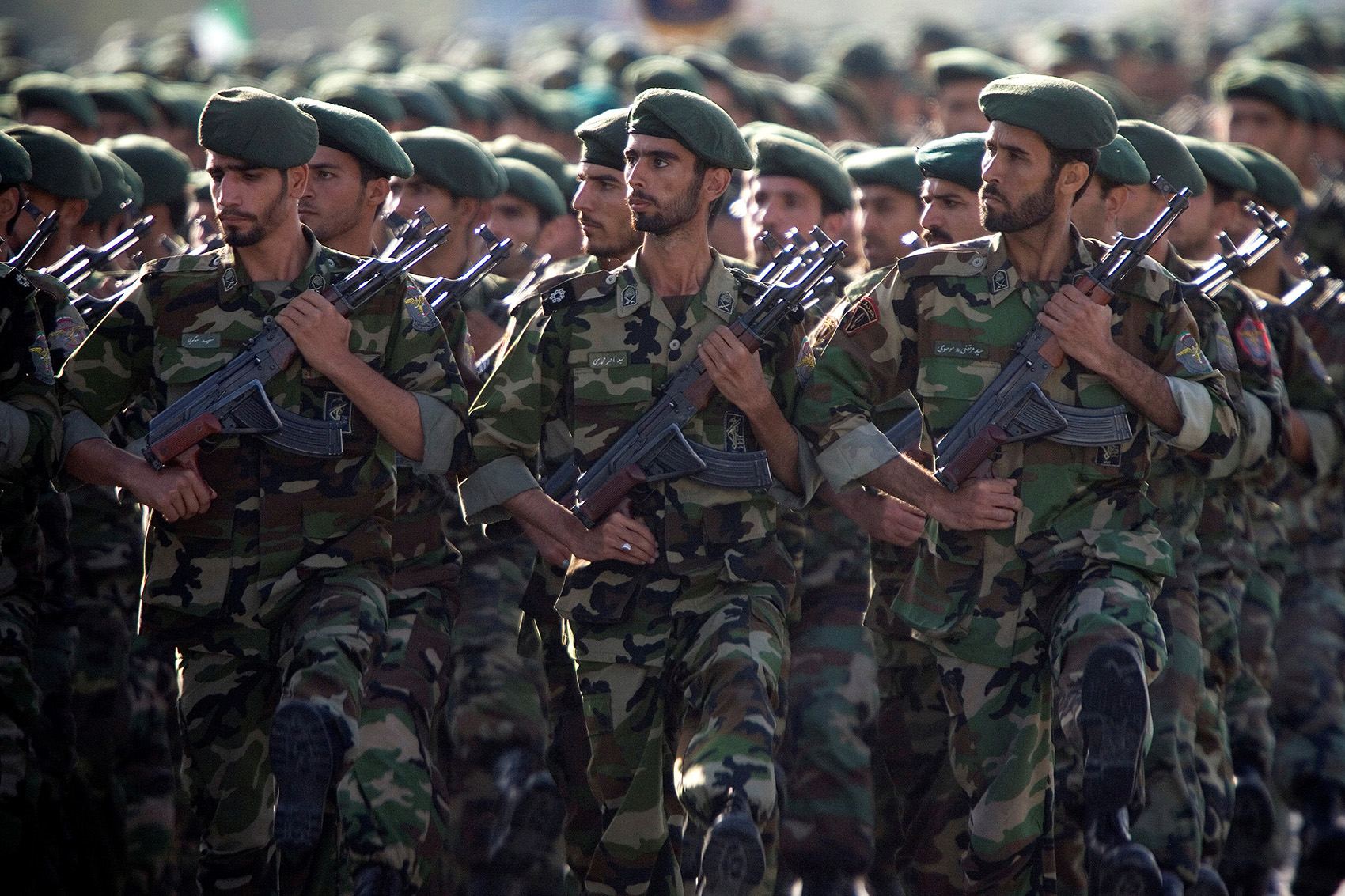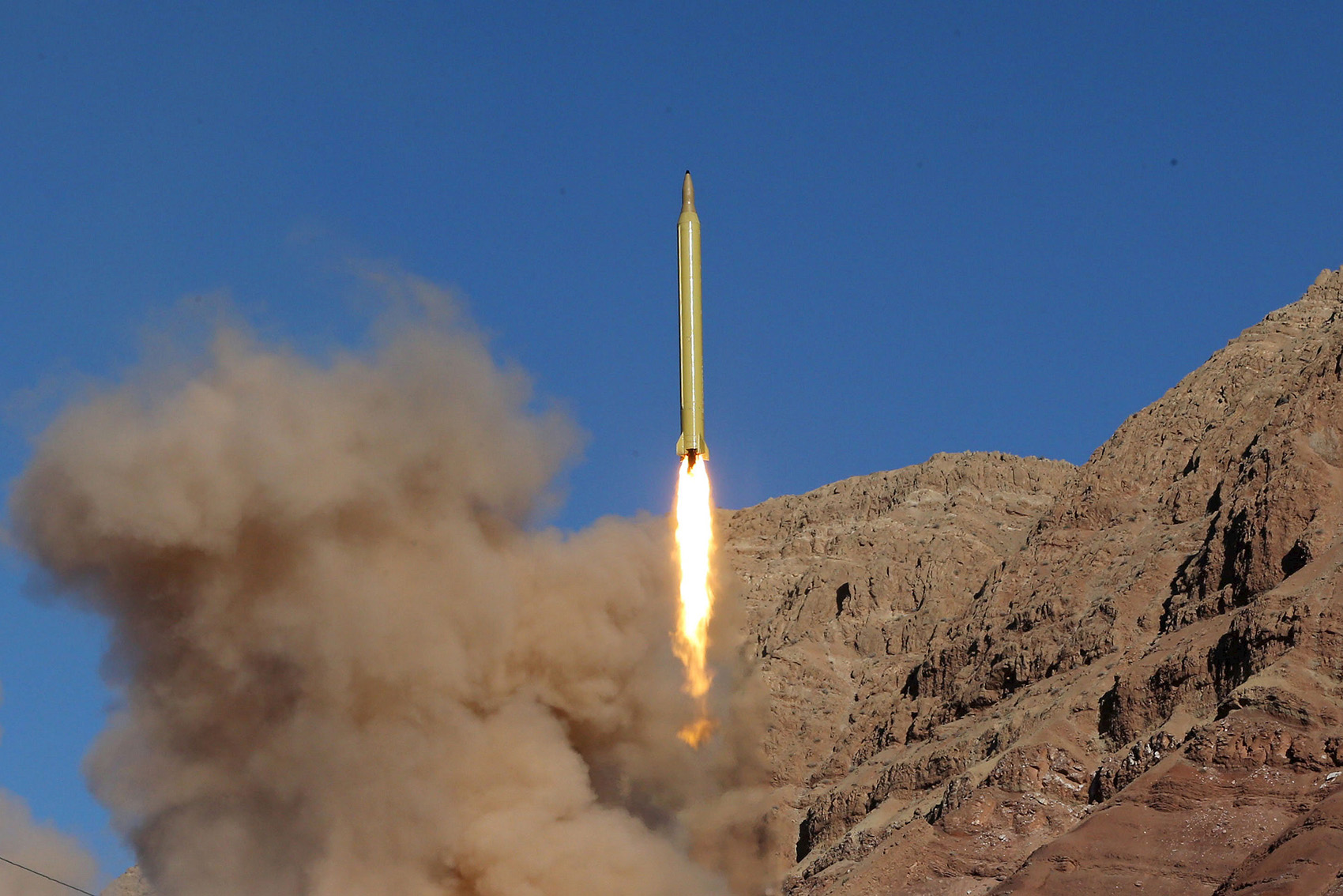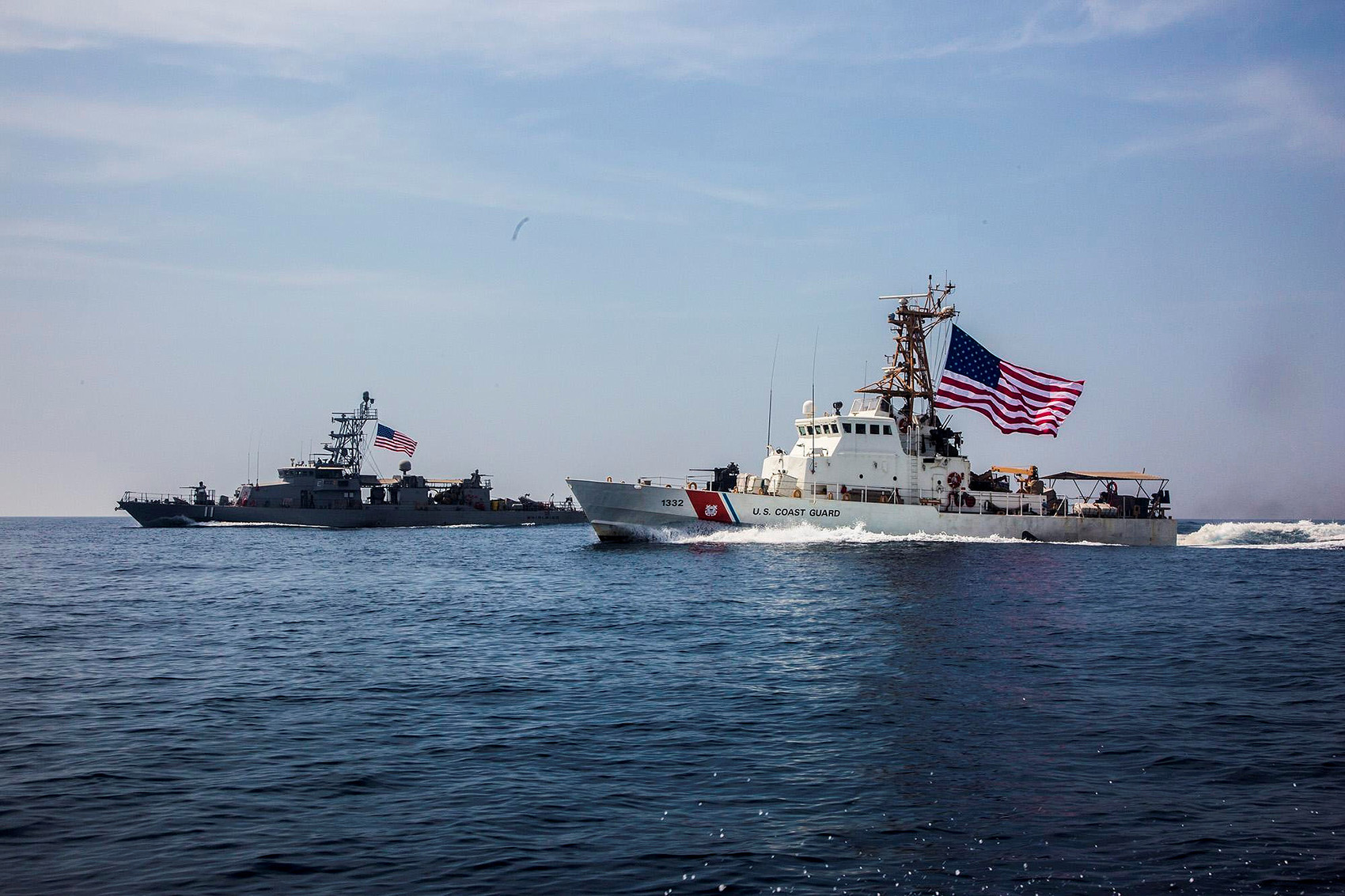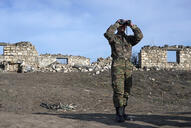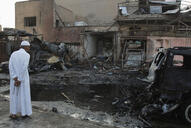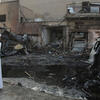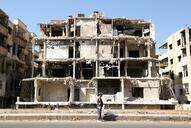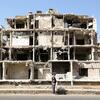More than forty years after the 1979 Iranian Revolution, relations between the United States and Iran remain tense. Iran continues to advance its nuclear program and its support for proxy forces throughout the Middle East, despite U.S. efforts to curtail both. The outbreak of war between Israel, a close U.S. ally, and the Iran-backed militant group Hamas in October 2023 brought fears of direct conflict between the United States and Iran to their highest point in several years. Iran carried out its first-ever direct attack on Israeli territory on April 13, 2024, with Iran deploying over 300 unmanned aerial vehicles and missiles. Tehran’s attacks followed an April 1 Israeli airstrike which killed multiple senior Iranian military officers in an Iranian consular building in Syria. These developments marked an unprecedented escalation in the confrontation between Iran and Israel. In addition to concerns about direct U.S.-Iran conflict, existing proxy warfare in Syria, Yemen, and Iraq is at risk of escalating as regional tensions mount, placing thousands of U.S. troops and U.S. interests in the Middle East in danger. U.S. leaders continue to emphasize the importance of avoiding a full-scale regional war.
Iran has pursued a nuclear program since at least 1957, with varying degrees of success. By the late 1980s—during a brutal war with Iraq—Iran decided to develop nuclear weapons to ensure its security and, consequently, pursued agreements with China and Russia throughout the 1990s to support the program’s research. In the summer of 2002, the National Council of Resistance of Iran, an umbrella organization made up of Iranian dissident groups, exposed the existence of two Iranian nuclear sites that were hidden from the International Atomic Energy Agency (IAEA). By 2003, there was an intensive diplomatic effort to halt Iran’s nuclear program, and Iran agreed to do so, insisting only that it maintain its centrifuges for nuclear energy. However, Iran did not follow through on its transparent reporting commitment to the IAEA and continued its covert activities, leading to a June 2004 rebuke and a September 2005 finding of non-compliance by the IAEA, paving the way for a future referral to the UN Security Council (UNSC). In 2006, the UNSC adopted Resolution 1696, the first legally binding call for Iran to suspend its uranium enrichment program. Over the next few years, the UNSC adopted a series of resolutions imposing crippling economic sanctions on Iran for its failures to suspend its enrichment-related activities.
Between 2011 and 2015, the compounding effects of international sanctions led Iran’s economy to contract by 20 percent and unemployment to rise to 20 percent [PDF]. In 2013, Hassan Rouhani, a noted reformer, won Iran’s presidential election, campaigning on a promise to lift sanctions and restore the economy. Over the next two years, the United States convened several rounds of bilateral talks and led the other P5+1 coalition members—China, France, Germany, Russia, and the United Kingdom—in negotiations with the new leadership of Iran, which resulted in the adoption of the Joint Comprehensive Plan of Action (JCPOA) in 2015. Once key parties had signed the agreement, the UN Security Council approved UN resolution 2231, which paved the way for sanctions relief. The JCPOA requires Iran to reduce its stockpile of enriched uranium by 98 percent for fifteen years, cut the number of operating centrifuges by two-thirds for ten years, and provide inspectors access to enrichment facilities within twenty-four days if the IAEA suspects violations. Moreover, if the IAEA confirms violations, the JCPOA allows for the immediate reinstatement of sanctions. After the JCPOA entered into force on January 16, 2016, Iran received sanctions relief totaling nearly $100 billion.
Iran has also continued to develop ballistic missiles, which, according to the United States, violates UN resolution 2231. Because the JCPOA only addressed Iran’s nuclear program—and not its revisionism or ballistic missile programs—the Donald J. Trump administration withdrew the United States from the JCPOA, pledging to seek a more comprehensive deal. Secretary of State Mike Pompeo subsequently issued twelve requirements for a new agreement, which Iranian Supreme Leader Ali Khamenei responded to by proposing seven conditions for remaining in the JCPOA. In 2018, the Trump administration began reimposing sanctions on Iran and demanded that European countries withdraw from the JCPOA as part of a new containment strategy. France, Germany, and the United Kingdom refused to do so and attempted to devise a backchannel for trade with Iran; the Trump administration responded by threatening European allies and European companies with consequences should they continue to do business with Iran. Iran’s oil exports have since decreased by more than half. U.S. sanctions sparked the worst economic crisis Iran has faced in forty years and emboldened Iranian hardliners.
While the Trump administration pursued a strategy of maximum pressure to bring Iran to the negotiating table, Iran began to contravene the JCPOA’s restrictions on its nuclear program, raising tensions. In April 2019, the United States designated the IRGC a terrorist organization—the first time the United States classified part of a foreign government as such. In May 2019, after intelligence suggested Iran and its militias were preparing to attack U.S. troops in Iraq and Syria, the United States deployed B-52 nuclear-capable bombers, an aircraft carrier strike group, and additional Patriot missile batteries to the Middle East to deter Iran. Over the next month, six oil tankers in or near the Strait of Hormuz were attacked, which U.S. government officials blamed on Iran, and the United States deployed an additional 2,500 troops to the Middle East.
Though the JCPOA limited Iran’s nuclear ambitions, its regional ambitions continued to grow. Iran has continued to arm and train Shiite militants through its Quds Force—the Islamic Revolutionary Guard Corps (IRGC) international arm—which has exacerbated sectarian divisions in the Middle East. The Quds Force has provided advanced armed drones to Hezbollah in Lebanon, trained and funded more than one hundred thousand Shiite fighters in Syria, supplied ballistic missiles and drones to Yemen’s Houthis, and helped Shiite militias in Iraq build missile capabilities. The U.S. government considers Iran to be the foremost state sponsor of terrorism, spending more than one billion dollars on terrorist financing annually, and there are between 140,000 and 185,000 IRGC-Quds Force partner forces in Afghanistan, Gaza, Lebanon, Pakistan, Syria, and Yemen.
In late June 2019, Iran downed a U.S. Global Hawk drone in the Strait of Hormuz, and President Trump ordered a cyberattack and the imposition of new sanctions. Later in July, the United States downed an Iranian drone in the Strait of Hormuz after the drone approached a U.S. Navy ship. In September 2019, the United States deployed a small number of troops to bolster Saudi air defenses after a Houthi strike on a Saudi oil facility that Saudi Arabia blamed on Iran. On December 31, Trump blamed Iran for backing protests that tried to seize the U.S. Embassy in Baghdad. Days later, on January 3, 2020, tensions peaked when the United States killed Qasem Soleimani, the commander of Iran’s Quds Force, in a Baghdad air strike. In response, Iran said it would no longer adhere to restrictions under the nuclear deal, and it accidentally shot down a Ukrainian passenger plane while on high alert. In late 2020, Trump continued to ratchet up sanctions, and Iran boosted uranium enrichment to levels well beyond the limits of the nuclear deal after one of its top nuclear scientists was killed.
Shortly after his inauguration in January 2021, President Joseph R. Biden launched revived efforts to get both Tehran and Washington to comply with the JCPOA. In February, the Biden administration announced three opening moves, signaling a desire to get negotiations back on track: accepting an invitation from the EU to attend a meeting of the P5+1 countries, rescinding the Trump administration’s invocation of “snapback” sanctions at the UN, and lifting travel restrictions on Iranian diplomats in New York. In April 2021, the two countries began the first round of several negotiations in Vienna, though neither side wanted to be the first to resume its obligations under the deal. Shortly after, Iran blamed Israel for an explosion at its Natanz nuclear facility and subsequently boosted uranium enrichment to 60 percent, closer to the level required for a bomb. In June, talks stalled further after Ebrahim Raisi won the Iranian presidential election and took a more hardline stance toward negotiations. In early 2022, Israel hosted the Negev Forum, which brought together Middle Eastern countries that had normalized relations with Israel to deter Iran, and the United States held secret military talks with several countries in the region.
In May 2023, China brokered a deal to restore official ties between Iran and Saudi Arabia, and Iran reopened its embassy in Riyadh. Iran has also pursued rapprochement with the UAE and expressed support for a regional dialogue in a bid to decrease its isolation. However, Iran continued military provocations in 2023, unveiling a new ballistic missile, seizing two tankers in April and May, and attempting to seize two more in July. In response, the United States sent F-16 fighter jets to the Persian Gulf, and more than three thousand Navy and marine troops, led by an aircraft carrier, sailed through the Suez Canal toward the area as part of a new maritime force.
The risk of direct confrontation between the United States and Iran increased significantly following the outbreak of the Israel-Hamas war, where Iran-backed proxy forces are ramping up strikes in protest of Israel’s military incursion into Gaza, including more than 150 attacks on U.S. targets in Iraq and Syria. In response, the United States ordered airstrikes on two Iran-backed facilities on October 26 and eighty-five more Iran-affiliated targets in the two countries on February 2, 2024. The Houthis in Yemen, and Hezbollah in Lebanon—both major players in Iran’s “axis of resistance”—have also opened war fronts in the Red Sea and Israel’s northern border with Lebanon, spurring fears of regional spillover.
On April 1, 2024, tensions peaked when a suspected Israeli airstrike against an Iranian consular building in Damascus, Syria, killed two of its generals and five military advisors. Iran retaliated by launching over three hundred drone and missile attacks on April 13; Israel stated that it intercepted 99 percent of the strikes with the help of France, the United Kingdom, and the United States. The response marked the first time Iran had directly targeted Israel.
